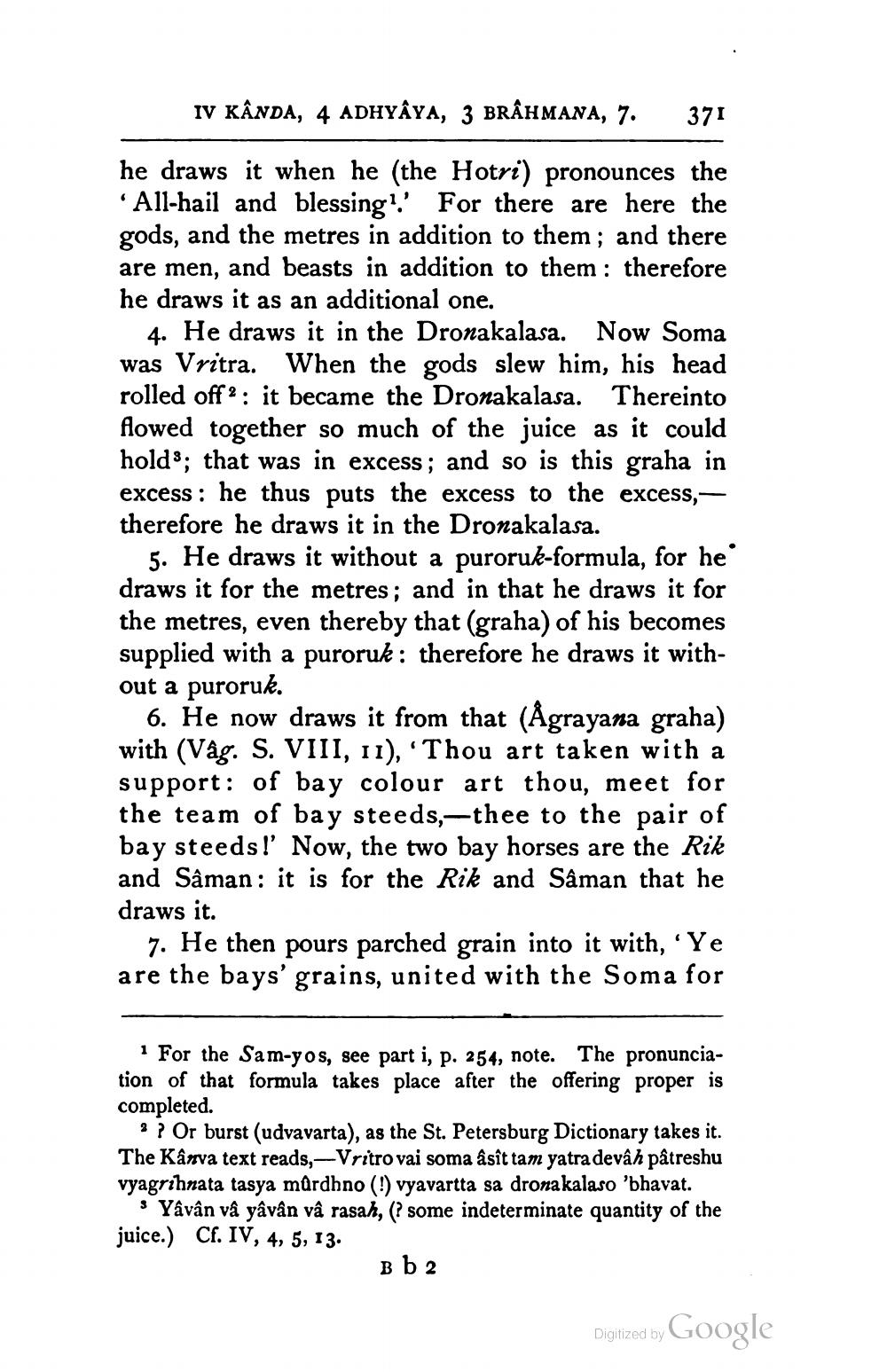________________
IV KÂNDA, 4 ADHYAYA, 3 BRÂHMANA, 7.
371
he draws it when he (the Hotri) pronounces the * All-hail and blessing?' For there are here the gods, and the metres in addition to them; and there are men, and beasts in addition to them : therefore he draws it as an additional one.
4. He draws it in the Dronakalasa. Now Soma was Vritra. When the gods slew him, his head rolled off 2: it became the Dronakalasa. Thereinto flowed together so much of the juice as it could holds; that was in excess; and so is this graha in excess : he thus puts the excess to the excess,therefore he draws it in the Dronakalasa.
5. He draws it without a puroruk-formula, for he draws it for the metres; and in that he draws it for the metres, even thereby that (graha) of his becomes supplied with a puroruk: therefore he draws it without a puroruk.
6. He now draws it from that (Ågrayana graha) with (Vág. S. VIII, 11), 'Thou art taken with a support: of bay colour art thou, meet for the team of bay steeds,-thee to the pair of bay steeds!' Now, the two bay horses are the Rik and Sâman: it is for the Rik and Saman that he draws it.
7. He then pours parched grain into it with, 'Ye are the bays' grains, united with the Soma for
* For the Sam-yos, see part i, p. 254, note. The pronunciation of that formula takes place after the offering proper is completed.
? Or burst (udvavarta), as the St. Petersburg Dictionary takes it. The Kânva text reads-Vritro vai soma âsît tam yatra devâh påtreshu vyagrihnata tasya mürdhno (!) vyavartta sa dronakalaso 'bhavat.
Yâvân vâ yâvân vâ rasah, (? some indeterminate quantity of the juice.) Cf. IV, 4, 5, 13.
Bb 2
Digitized by Google




